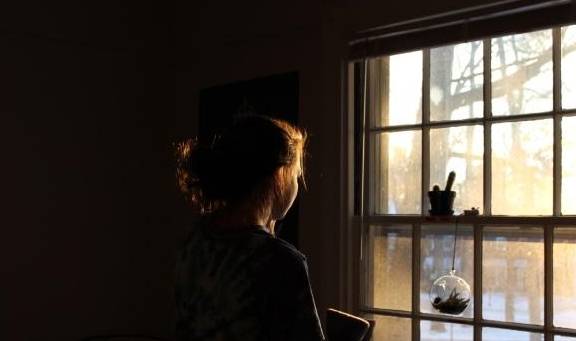Why do some people get depressed in winter? Some emotional disorders are closely linked to the seasons!

Some people say that her mood changes particularly markedly with the seasons; once autumn and winter arrive, her mood becomes very low, increasingly low, and she always feels sleep-deprived and sleep-deprived day after day …… Interestingly, when she goes to live temporarily with relatives in the south where there are long hours of sunshine, her symptoms disappear naturally.According to her description, she has very clear symptoms of seasonal affective disorder.
It has long been known that some episodes of affective disorder are closely linked to the seasons; they occur with the onset of depression each winter, which resolves itself or turns into light mania by the beginning of spring; this is particularly common in northern Europe, where the days are short and the nights long and the winters last longer.
For this reason, some researchers have named this group of disorders Seasonal Affective Disorder.
Symptoms of seasonal affective disorder include depression, fatigue, loss of interest and poor concentration, as well as vegetative symptoms such as drowsiness, carbohydrate consumption and weight gain.
In addition, there are several important features of depressive episodes in people with seasonal affective disorder.
One, during winter episodes, patients experience less despair, which seems to explain the lower suicide rates associated with this type of depression.
second, depressive symptoms usually get progressively worse with age, and after several years of regular episodes, depressive episodes become progressively independent of the season
Research suggests that seasonal affective disorder is associated with light exposure and melatonin production.
So, physiologically, how exactly does such a ‘trick’ work?
One study found that a microscopic protein particle (5-hydroxytryptamine carrier) plays a key role; in this case, the tiny protein particle acts as a ‘scavenger’, removing 5-hydroxytryptamine (the ‘happy hormone’) from the interstices of brain cells.
In layman’s terms, when sunlight is present, melatonin production is suppressed, thus reducing the activity of the ‘scavengers’ and increasing the ‘happy hormones’ in the brain, resulting in a high mood.
During the long nights of winter, the ‘sweepers’ are extremely active and thorough, leaving little ‘happy hormones’ in the brain, and the mood is naturally low.
In the treatment of seasonal affective disorder, light therapy has been recognised by researchers.
Most researchers agree that light therapy is an effective treatment for people with seasonal affective disorder, is relatively well tolerated and has no significant side effects.
However, symptoms such as eye strain, blurred vision, irritability, headaches and nausea have been reported during treatment, but they are mild and short-lived.
Compared to medication, phototherapy has the advantage of being economical and free of anticholinergic side effects; as with medication, phototherapy can trigger mild mania or hypomania when used in patients susceptible to bipolar disorder.
It is important to note here that it is not appropriate to use phototherapy only after the onset of seasonal affective disorder, and that preventive phototherapy is a viable option for recurrent seasonal affective disorder.
Some researchers have suggested that phototherapy should be given to patients with seasonal affective disorder before the onset of symptoms, and have recommended the use of combination therapy if necessary.



